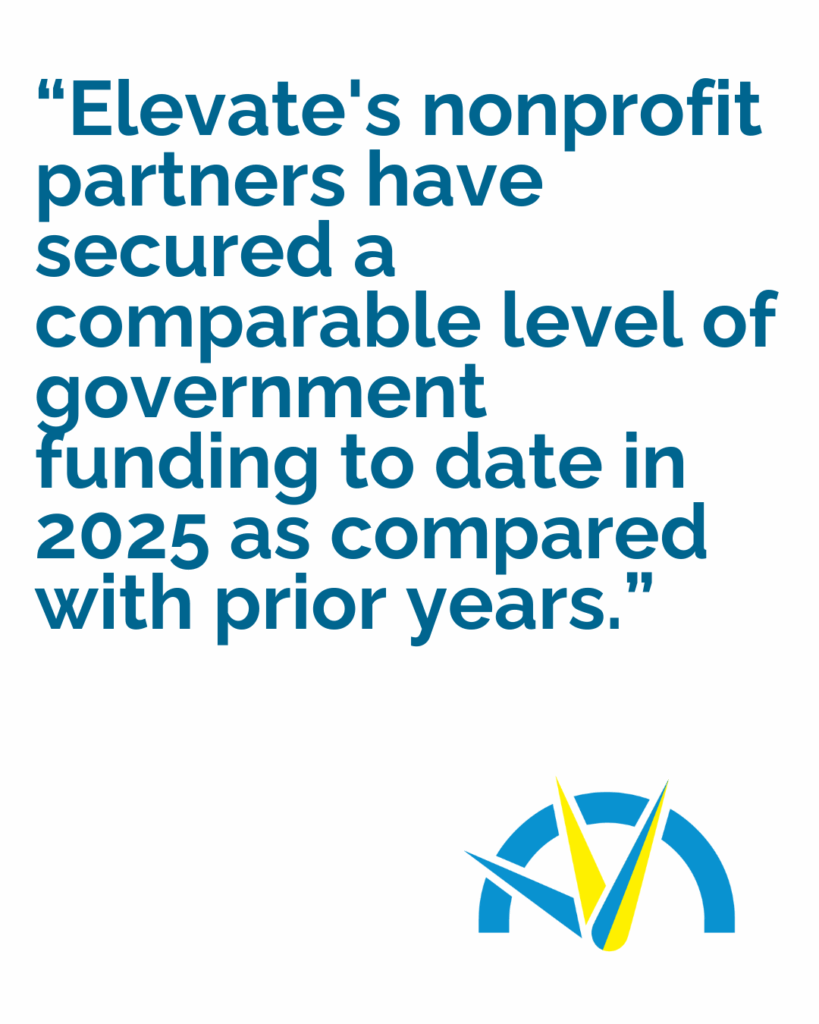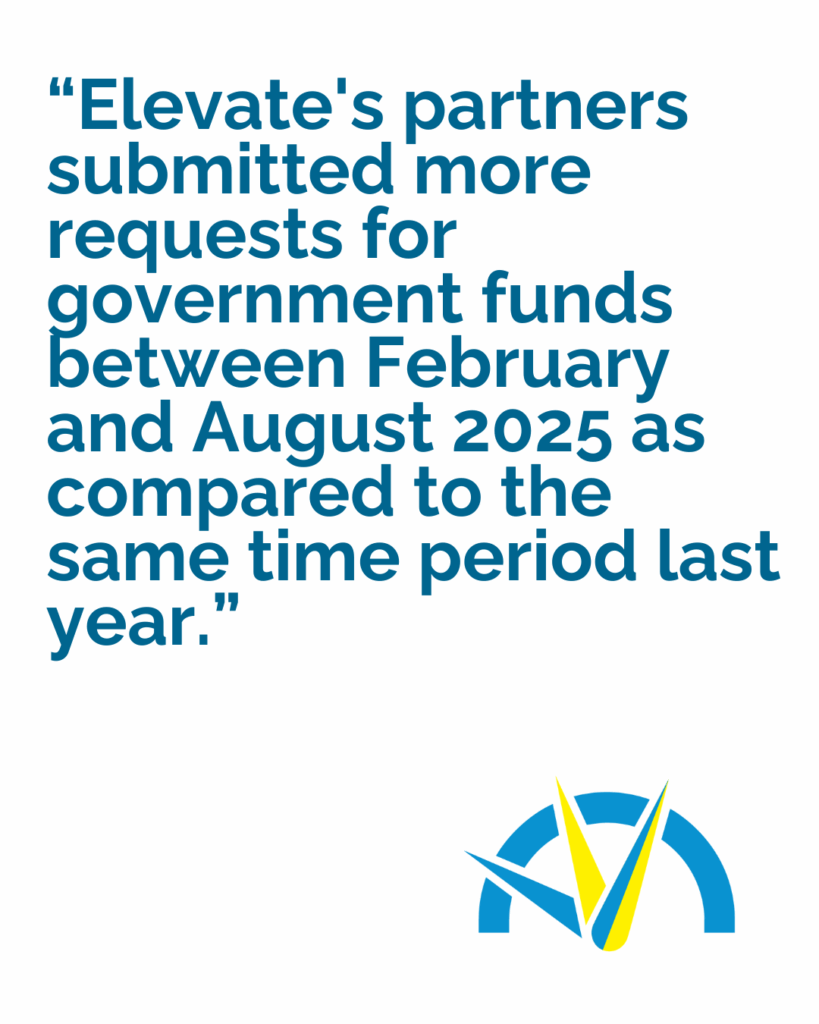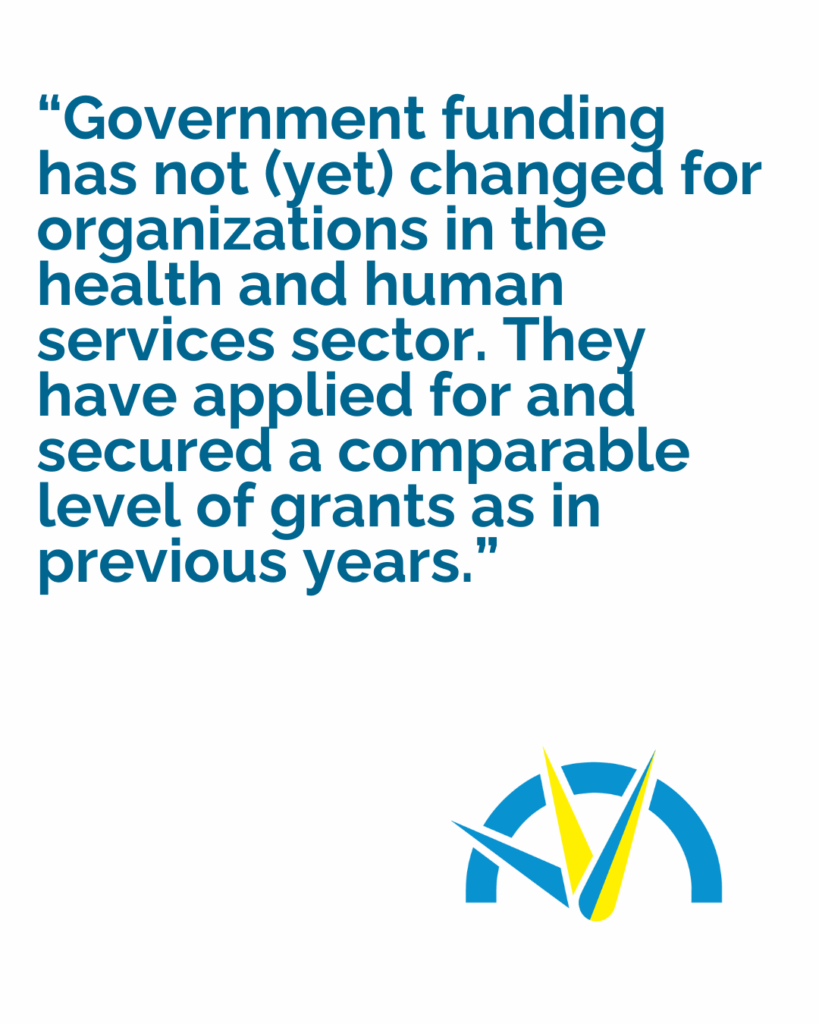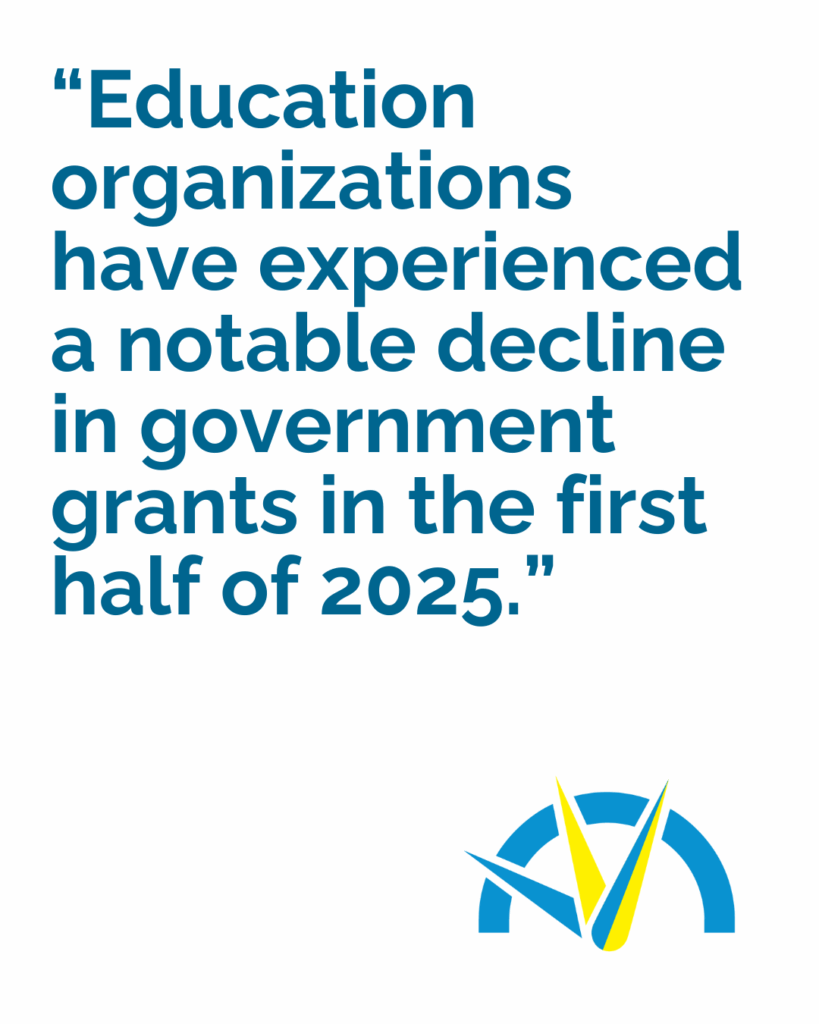Since January 2025, the nonprofit sector has been inundated with federal policy changes and Executive Orders that are changing the role that public funding plays in nonprofit revenue planning.
The ripple effects of these changes will be profound. Already, we have seen essential community services come to an end, reductions in force in nonprofits in nearly every issue area and sector, and contingency planning that includes fundamental changes to how nonprofits do their work.
However, substantial uncertainty persists. Not all public funding has concluded, particularly when you consider federal funds distributed to states and then passed through to local nonprofits. There are still RFPs being released for longstanding government programs. A recent Elevate article covers how the August 2025 Executive Order impacting federal grantmaking signals profound and semi-permanent changes to the way federal grants are developed, awarded, and disbursed. But, even this order assumes that some amount of federal funding will continue.
In this context, the team at Elevate wondered whether analysis of the large amount of data we track on RFPs, proposals, and funding awards could shed light on where nonprofits stand with respect to federal funding.
To this end, Elevate’s data team developed a preliminary comparison of public funding solicitations and awards in the first six months of this year compared to the first six months of 2022, 2023, and 2024. Here are our key findings:
1. Public Funding From Local and State Sources Has Not Yet Declined
To date, we have not yet seen substantial changes to patterns in pass-through funding at the local and state level.. Elevate clients have secured comparable levels of public funding between February and August of 2025 as they have in prior years.
Most of the public funding we track for our clients comes from local or state government sources, so our data is not a leading indicator of federal funding patterns. However, it is worth noting that no public funding awarded to Elevate clients to date in 2025 came directly from federal sources; and the loss of FEMA, HUD, and AmeriCorps funding will start to impact work in local communities over time.
2. Public Funding Requests Have Remained the Same (or Even Increased)
Elevate clients submitted more public grants between February and August 2025 in almost all sectors compared to the same period of time last year.
In the last six months, Elevate tracked a total of 79 public funding opportunities for our clients, compared to 62 opportunities during the same period last year. Of the proposals submitted so far this year, 42 are pending a funder response and 23 have been awarded to date. In the last three years, our win rate for public funding has been between 60% and 70%. If that continues, we expect to see an additional 25 government grants secured sometime in the next year.
3. Health, Human Services, and Housing clients have received the most public funding historically and have not yet seen a significant decline in grant requests or awards.
Elevate’s clients working in Health and Human Services secure nearly 83% of all public funding that we track. These organizations also have the largest overall budgets among Elevate clients. Health and Human Services organizations are still applying for public funding opportunities at a rate similar to prior years, and they have secured a comparable amount of public funding. While 2024 funding in this sector was nearly twice the amount secured between February and August 2025, this year’s award trends mirror 2023 award amounts, which appears to be related to several significant multi-year awards.
So, while the Trump Administration’s Executive Orders are clearly targeting a longstanding strategy of outsourcing public health and human services to nonprofits, the full impact of those changes have not yet been realised.
4. Public Funding for Education & Training organizations has been more immediately impacted.
Education & Training organizations receive 11% of the public funding secured by Elevate clients, making this the sector with the second highest amount of government funding among our partners. These organizations have experienced a noticeable decline in government grant awards in the first half of this year. Specifically, public funds awarded this year represent less than 5% of the total public funding awarded to Education & Training organizations during the same period last year. Even if you go back to 2023 to account for two-year grants, this year’s grant funds only reflect about 20% of the public grant awards during the same 6-month period.
By drilling down into the details of these funding streams, you can see that Department of Education funds distributed through local education departments represent significant missing dollars for organizations in the Education & Training sectors.
How We Got Our Data
Through our Comprehensive Grant Writing Services model, Elevate’s strategic focus is primarily to develop and grow private and corporate grant programs. However, many of our clients blend private and public grant funding to achieve sustainability. In these cases, we often track deadlines, awards, and reporting requirements for public opportunities as part of our commitment to provide holistic grant writing support. By comprehensively tracking public and private grant data whenever possible, we can support both our individual clients and the larger nonprofit sector spot and identify trends in funders and funding.
In addition, we write public grants for both current and new clients through our Writing Capacity Projects, through which we contract with clients to write and submit single proposals.
About the Author:

President & Managing Director



















